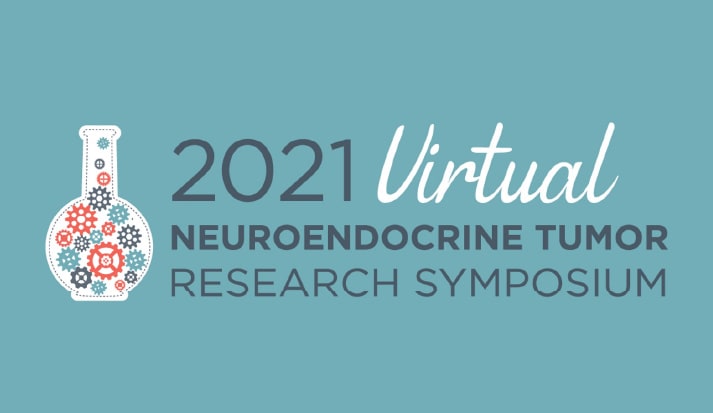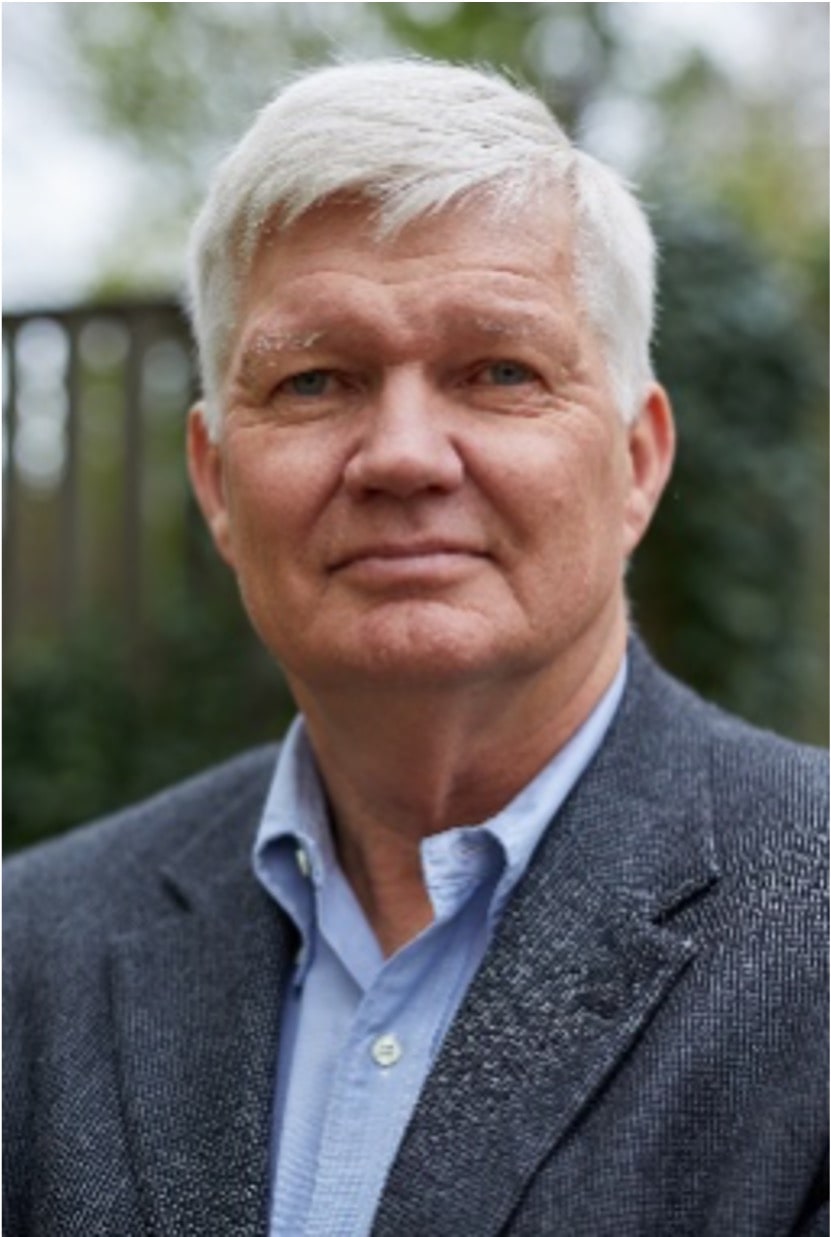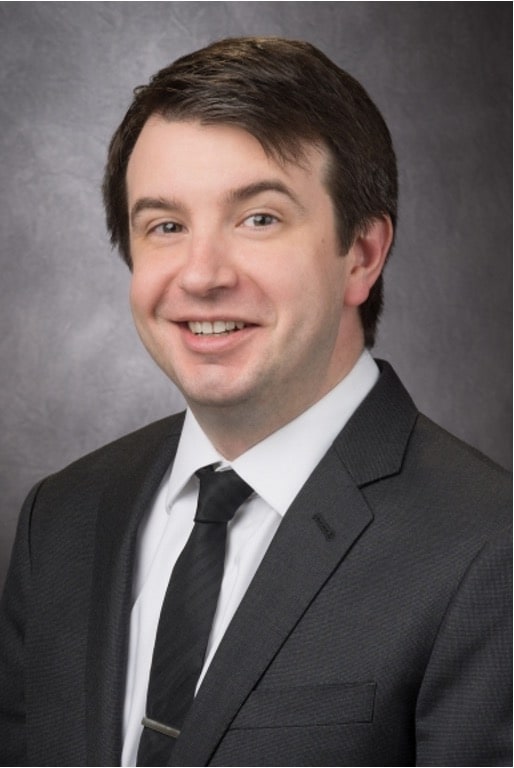2021 Symposium Topics:
- Gastrointestinal NETS
- Multiple NETs
- Pheochromocytoma and Paraganglioma
- Pancreatic NETs
SESSION 1: Gastrointestinal NETs
Presentations
- Rare Cancer Initiative Effort: A Roadmap For Neuroendocrine Tumor Dependency
Moony (Yuen-Yi) Tseng, PhD, Broad Institute (Eli and Edythe L. Broad Institute of MIT and Harvard) - Whole genome sequencing reveals the independent clonal origin of multifocal ileal neuroendocrine tumors
Netta Mäkinen, PhD, Dana-Farber Cancer Institute - Metabolomic Profile of Gastrointestinal and Pulmonary Neuroendocrine Tumors: Prognostic and Biological Relevance
Anna La Salvia, MD, Hospital Universitario 12 de Octubre - Nanobody-directed CAR T cells eliminate neuroendocrine tumors without toxicity via masking of the antigen target in normal cells
Xianxin Hua, MD, PhD, University of Pennsylvania
SESSION 2: Multiple NETs
Presentations
- Biodistribution and radiation dosimetry of 68Ga-DOTA-JR11 in patients with metastatic neuroendocrine tumors
Simone Krebs, MD, Memorial Sloan Kettering Cancer Center - Multimodal analogs of DOTA-JR11 to investigate the unexpected bone marrow toxicity in NET patients
Susanne Kossatz, PhD, Technical University Munich - Engineering Decreased Nephrotoxicity for SSTR2 Targeted Alpha Therapy
David Morse, PhD, H. Lee Moffitt Cancer Center & Research Institute - uPAR-targeted PRRT: new radionuclide-based therapy
Andreas Kjaer, MD, PhD, Copenhagen University Hospital (Rigshospitalet) - Digital Image Analysis in Neuroendocrine Tumors
Michelle Kim, MD, PhD, Icahn School of Medicine at Mount Sinai - SV2A PET Imaging for Noninvasive Assessment of Neuroendocrine Differentiation in Neuroendocrine Tumors
Guiyang Hao, PhD, UT Southwestern Medical Center - SSTR2-targeted delivery of temozolomide
Solmaz Aghaamiri, The University of Texas Health Science Center at Houston
SESSION 3: Pheo/Para & Lung NETs
Presentations
- Succinate accumulation is not sufficient for tumorigenesis in mouse chromaffin cells but dual loss of SDHB and NF1 yields SDHx-like pheochromocytomas
Justin Annes, MD, PhD, Stanford University - Adverse effects of oxygen in a cell culture model for SDHB-mutated Pheochromocytoma/Paraganglioma
Arthur Tischler, MD, Tufts Medical Center - First PET Imaging Studies with 3-[18F]fluoro-p-hydroxyphenethylguanidine ([18F]3F-PHPG) in Paraganglioma and Pheochromocytoma Patients
David Raffel, MD, The Regents of the University of Michigan - Organoid Models of Normal and Malignant Neuroendocrine Cells Reveal Pathways Important for Neuroendocrine Cell Growth, Differentiation, and Transformation
Talya Dayton, PhD, Hubrecht Institute of Developmental Biology and Stem Cell Research - Tumor xenografts in zebrafish: a new in vivo model for lung carcinoids
Giovanni Vitale, MD, PhD, Istituto Auxologico Italiano
SESSION 4: Pancreas NETs
Presentations
- Patient-derived Islet-like Tumoroids reflect phenotypic landscape of original Pancreatic Neuroendocrine Neoplasms and facilitate in vitro drug screening
Simon L. April-Monn, University of Bern (Universität Bern) - RABL6A-Myc signaling promotes pancreatic neuroendocrine tumor cell proliferation and survival
Ume Salma Shaik Amjad, PhD, The University of Iowa - Loss of MEN1 function inhibits DNA repair capability of pancreatic neuroendocrine tumors
Xavier Keutgen, MD, The University of Chicago - Loss of Men1 and Pten promotes invasion and metastasis of pancreatic neuroendocrine tumors
Ziqiang Yuan, MD, Rutgers University Foundation - The Importance of DDR genes in Response to PRRT- Evidence for PARP and DNA-PK as
Therapeutic Targets to Increase Efficacy
Rodney Hicks, MD, Peter MacCallum Cancer Centre - Angiopoietin-2/Tie2 signaling regulation of liver metastasis in pancreatic neuroendocrine tumors
Minah Kim, PhD, Columbia University Medical Center - The role of the B7x signaling pathway in the development and progression of neuroendocrine tumors
Steven Libutti, MD, Rutgers, The State University of New Jersey
Date
November 17-18, 2020
Location
Norton’s Woods Conference Center
American Academy of Arts & Sciences
136 Irving St, Cambridge, MA 02138









